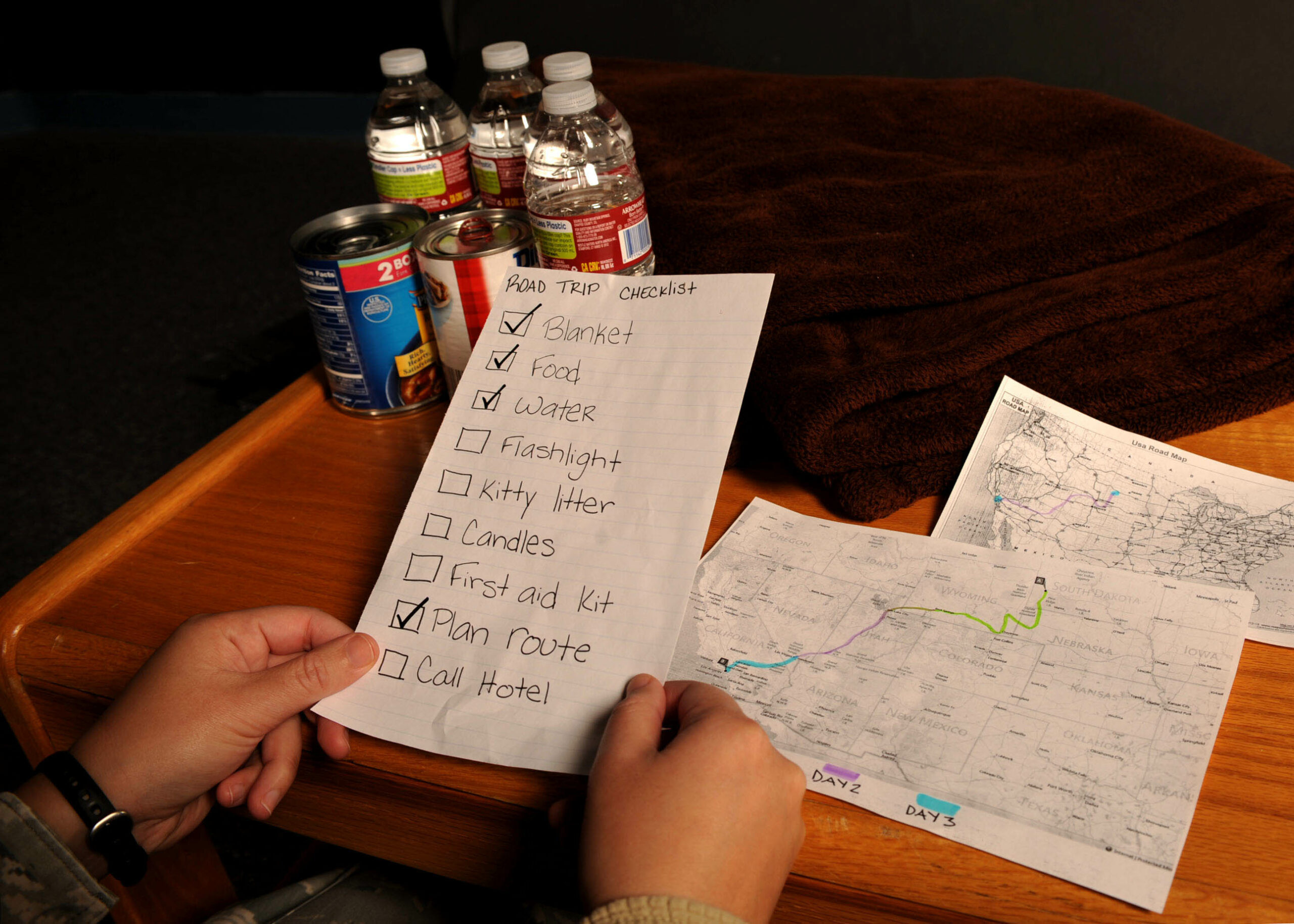When disaster strikes, you may be on your own for several days without access to survival necessities. To make sure you are prepared, create a 72-hour kit. This will mean stocking up on water, food, and other supplies that can support you for at least 72 hours.
Things to Consider When Packing Your 72-Hour Kit
Before assembling your 72-hour survival kit, take into account your family’s needs. How many are in your family? Do you have an infant? Does anyone have specific needs like medicine or allergies? These types of questions will help you decide what you need to pack. Remember to pack your 72-hour kit as lightly as possible. Only bring what you can reasonably carry in an emergency.
To put together your disaster kit, place items in airtight plastic bags. Then keep all your supplies in a duffel bag or plastic bins so that they are easy to transport.
Recommended Emergency Supplies
Some basic items for a 72-hour kit could include the following:
Food, Water, etc.
- Seven gallons of water per person
- Instant tea and coffee
- Powdered or canned milk
- Nonperishable food like canned fruit and vegetables and canned meat
- Canned soups and juices
- Cereal bars, dried fruit, peanut butter, cookies and candy
- Bread in waterproof packaging
- Portable cooler and ice
- Waterproof and Butane Lighters
- Flashlights with spare batteries
- Battery operated weather radio/TV/alarm clock
Cooking Equipment
- Paper plates, cups, napkins, and paper towels
- Plastic eating utensils
- Manual can opener
- Aluminum foil
- Oven mitts
- Charcoal and lighter fluid
- Sterno
- Portable camp stove or grill, and an extra propane tank
Medical Provisions
- Bleach or water purification tablets
- First Aid Kit that has antibiotic cream, pain relievers, and antacids
- One month’s supply of prescriptions
- Sunscreen
- Mosquito Repellent and netting
- Fire extinguisher
Infant Necessities
- Disposable diapers and wipes
- Formula, food, and medication
Personal Items
- Toiletries and toilet paper
- Detergent and soap
- Change of clothing
- Sleeping bag, blankets, and pillows
- Work gloves and rain gear
- Extra set of contact lenses or glasses
- Extra sets of keys
- Card games, books, magazines, etc.
- Cash
Documents
- Photo identification
- Medical history and information
- Photocopies of prescriptions
- Utility bills for proof of occupancy of residence
- Backup disks of your home computer files
- Camera
- A Fire-and water-proof container to store documents
Emergency Kit Maintenance
You will need to make sure to maintain your kit so that it will be ready to use at a moment’s notice. To do so:
- Keep boxed food in tightly closed metal or plastic containers
- Store canned goods in a cool, dry place
- Use and replace food items before they expire
- Go over your family’s needs every year and update your kit as needed.
Testing Your 72-Hour Kit
Putting together your kit is just the first part of preparation. You are not fully prepared until you have tested it out. This is one of the most important aspects of emergency readiness. Test your kit about once every 6 to 12 months. This will allow you to become acquainted with your gear and let you solve any problems ahead of time.
Trying out your 72-hour kit will also give you the chance to check if anything is missing and make necessary adjustments. For example, what if your pocket knife doesn’t actually work or you forgot to pack a change of clothes? What if you now have a toddler instead of an infant? Also, use this time to rotate food items before they expire and check the battery life on electronics.
Assembling a 72-hour kit will help you be prepared and less stressed when disaster strikes.









